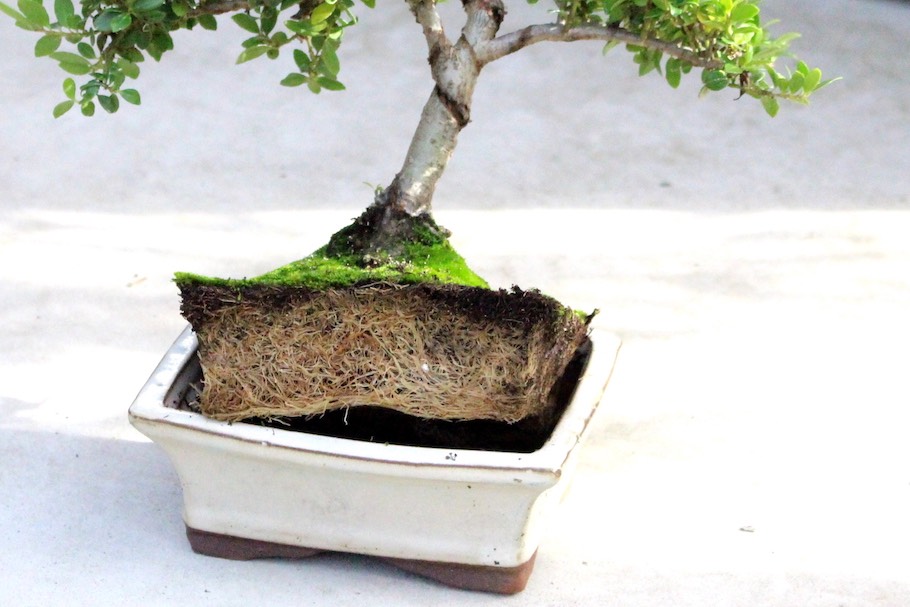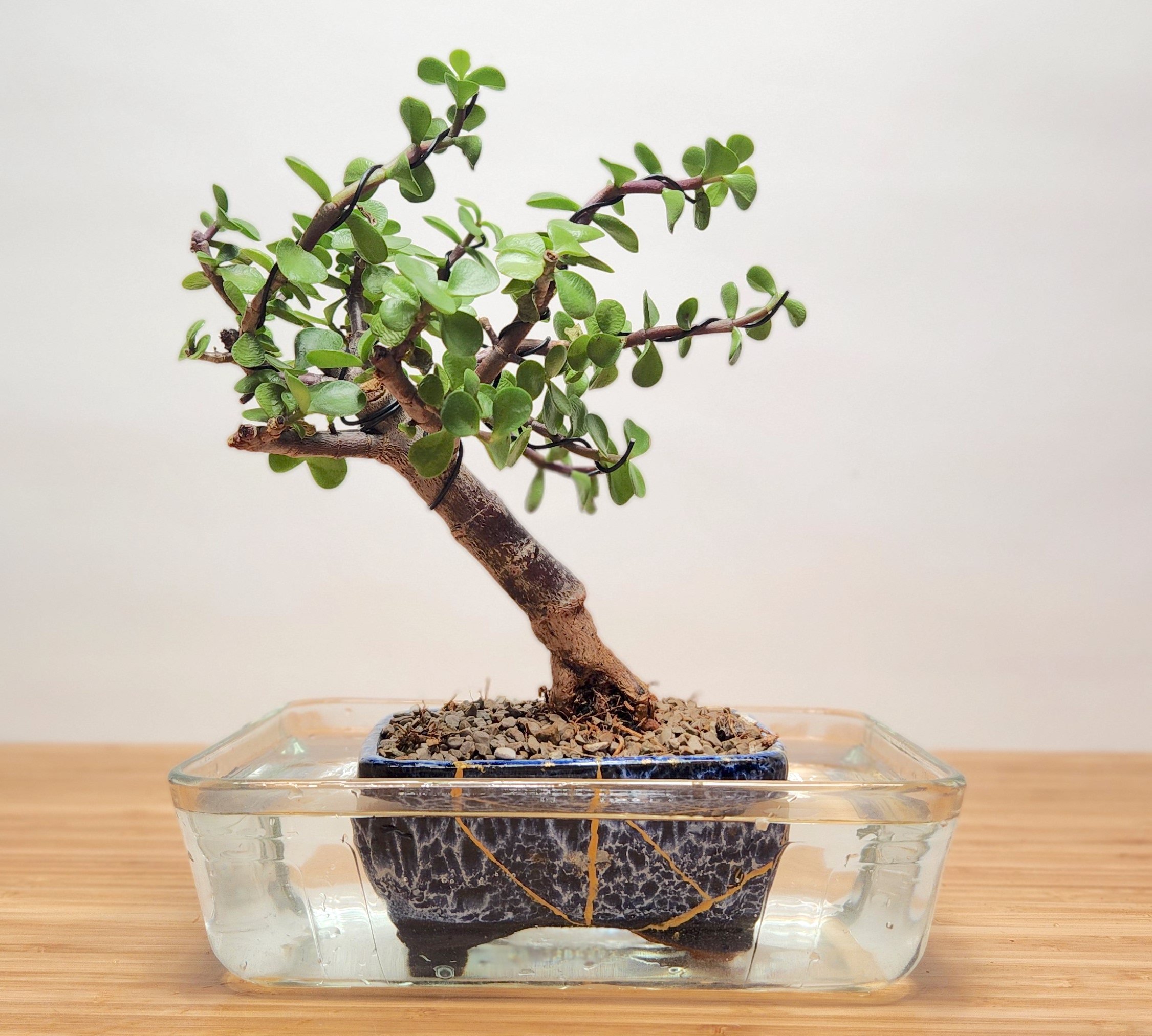Water the bonsai tree when the topsoil feels dry. Typically, this means watering every two to three days.
Bonsai trees require careful attention to thrive. Proper watering is essential for their health and growth. Over-watering can lead to root rot, while under-watering can cause the tree to dry out. Factors like tree species, pot size, and climate influence watering needs.
Always check the soil moisture before watering. Use a well-draining soil mix to ensure excess water doesn’t harm the roots. It’s crucial to observe and adjust watering habits according to seasonal changes. Consistent monitoring will help maintain the bonsai’s beauty and vitality. Regular care ensures your bonsai tree remains a vibrant and cherished part of your home or garden.

Credit: www.bonsaiempire.com
Introduction To Bonsai Watering
Bonsai trees are small and delicate. They need special care to thrive. Watering is one of the most important parts of bonsai care. Water too much, and the tree can rot. Water too little, and it will dry out. This section will help you understand how to water your bonsai correctly.
Importance Of Proper Watering
Proper watering keeps your bonsai tree healthy. Water helps the tree absorb nutrients from the soil. Without enough water, the tree cannot grow. Too much water can cause the roots to rot. Balanced watering is key to a healthy bonsai.
Here are some benefits of proper watering:
- Strong root growth
- Healthy leaves
- Better resistance to diseases
- Overall tree vitality
Common Mistakes
Many beginners make mistakes with bonsai watering. These mistakes can harm the tree. Here are some common mistakes to avoid:
- Overwatering: This can cause root rot. Make sure the soil is not always wet.
- Underwatering: This can dry out the tree. Check the soil regularly.
- Using the wrong water: Tap water can contain chemicals. Use filtered or rainwater if possible.
- Ignoring seasonal changes: Bonsai trees need less water in winter. Adjust your watering schedule.
By avoiding these mistakes, you can keep your bonsai tree healthy and beautiful.
Understanding Bonsai Tree Needs
Caring for a bonsai tree requires attention to its specific needs. The watering schedule is one of the most important aspects. Understanding these needs ensures your bonsai thrives. Let’s dive into the factors and seasonal changes that affect watering frequency.
Factors Influencing Watering Frequency
Several factors determine how often you should water your bonsai tree:
- Tree Species: Different species need different amounts of water.
- Pot Size: Smaller pots dry out faster than larger ones.
- Soil Type: Some soils retain water better than others.
- Humidity Levels: Higher humidity means less frequent watering.
- Location: Indoor bonsai might need different care than outdoor ones.
| Factor | Effect on Watering |
|---|---|
| Tree Species | Varies water needs |
| Pot Size | Smaller pots dry faster |
| Soil Type | Affects water retention |
| Humidity Levels | Higher humidity, less water |
| Location | Indoor vs Outdoor |
Seasonal Changes
Seasons also play a crucial role in bonsai care:
- Spring: Water more frequently as growth starts.
- Summer: Higher temperatures mean daily watering.
- Autumn: Reduce watering as temperatures drop.
- Winter: Water sparingly; trees are dormant.
Understanding these factors and changes will help maintain a healthy bonsai. Keep an eye on your tree’s needs throughout the year.
Types Of Bonsai Trees
Understanding the types of Bonsai trees is crucial for proper care. Different types have different watering needs. Knowing whether your Bonsai is indoor or outdoor, deciduous or evergreen helps in proper watering.
Indoor Vs Outdoor Bonsai
Indoor Bonsai trees include species like Ficus, Jade, and Chinese Elm. They need less water compared to outdoor varieties. Indoor Bonsai often prefer a moist but not soggy soil environment.
Outdoor Bonsai trees include species like Juniper, Pine, and Maple. These trees usually require more water. Outdoor Bonsai are exposed to natural elements, which affects their watering needs.
| Bonsai Type | Watering Needs |
|---|---|
| Indoor | Less frequent, keep soil moist |
| Outdoor | More frequent, adjust to weather |
Deciduous Vs Evergreen
Deciduous Bonsai trees shed leaves seasonally. They include species like Maple, Elm, and Birch. These trees need less water during the dormant winter months.
Evergreen Bonsai trees retain their leaves all year. They include species like Pine, Juniper, and Spruce. Evergreen Bonsai need consistent watering throughout the year.
- Deciduous: Needs less water in winter
- Evergreen: Consistent watering all year
To ensure your Bonsai thrives, understand its type and adjust watering accordingly.

Credit: bonsaibar.com
Signs Your Bonsai Needs Water
Understanding the signs that your Bonsai tree needs water is crucial. A well-watered Bonsai thrives, while an under-watered one struggles. Let’s dive into the key indicators that your Bonsai may need a drink.
Visual Indicators
The first step is to observe the tree’s appearance. Look for these visual indicators:
- Leaves turning yellow or brown
- Leaves curling or wilting
- Dry, brittle branches
- Soil pulling away from the pot edges
If you notice any of these signs, your Bonsai is likely thirsty.
Soil Moisture Testing
Another effective method is soil moisture testing. Here’s how to do it:
- Insert a wooden skewer or chopstick into the soil.
- Leave it in for a few minutes.
- Remove the skewer and check for moisture.
If the skewer comes out dry, your Bonsai needs water. If it’s moist, wait a bit longer before watering.
Using a moisture meter is another reliable option. Insert the meter into the soil and read the moisture level. This tool provides an accurate measure of your Bonsai’s water needs.
Watering Techniques
Understanding the right watering techniques is vital for the health of your bonsai tree. Proper watering ensures that your bonsai thrives and remains vibrant. There are two primary methods: top watering and bottom watering. Each technique has its own advantages and can be applied based on your bonsai’s specific needs.
Top Watering
Top watering is the most common way to water a bonsai tree. This method involves pouring water directly onto the soil surface. Here are the steps:
- Use a watering can with a fine nozzle.
- Water the soil evenly, ensuring it is thoroughly wet.
- Keep watering until water drains from the pot’s holes.
Top watering helps wash away salts and other buildup in the soil. It also ensures that the entire root system gets hydrated.
Bottom Watering
Bottom watering involves placing the bonsai pot in a shallow tray of water. This technique allows the soil to absorb water from the bottom up. Follow these steps:
- Fill a tray with water to about one inch deep.
- Place the bonsai pot in the tray.
- Let it sit for 10-15 minutes.
- Remove the pot and let excess water drain.
Bottom watering is useful for ensuring deep root hydration. It also minimizes the risk of over-watering the surface soil.
Both top watering and bottom watering have their own benefits. By combining these techniques, you can maintain the health and beauty of your bonsai tree.
Tools For Effective Watering
Watering your bonsai tree correctly is crucial for its health. Using the right tools makes this easier. Below are some essential tools to help you water your bonsai effectively.
Watering Cans
A watering can with a fine nozzle is ideal. It ensures water flows gently and evenly. This prevents soil erosion and keeps the tree’s roots safe. Choose a can with a long spout for better reach. This helps you water the soil directly and avoids wetting the leaves.
Here’s a quick comparison of popular watering cans:
| Brand | Capacity | Spout Type |
|---|---|---|
| Brand A | 1 liter | Fine nozzle |
| Brand B | 2 liters | Long spout |
| Brand C | 1.5 liters | Adjustable nozzle |
Moisture Meters
A moisture meter is another valuable tool. It helps you check soil moisture levels accurately. Insert the meter into the soil near the roots. The device will show if the soil is dry, moist, or wet. This helps you know exactly when to water your bonsai.
Consider these factors when choosing a moisture meter:
- Accuracy: Ensure the meter gives precise readings.
- Durability: Choose a meter with a sturdy build.
- Ease of use: Opt for a user-friendly design.
Using a moisture meter prevents overwatering or underwatering. It keeps your bonsai tree healthy and thriving.
Creating A Watering Schedule
Watering your bonsai tree correctly is crucial. A well-planned watering schedule can ensure your bonsai tree thrives. This guide will help you understand how to create an effective watering schedule.
Daily Monitoring
Check your bonsai tree daily. This helps you know its water needs. Use your finger to feel the soil. If the top layer is dry, water the tree. Ensure water seeps through the drainage holes.
- Feel the soil daily.
- Water if the top layer is dry.
- Ensure drainage holes are clear.
Adjusting For Climate
The climate affects how often you water the bonsai. In hot weather, water more often. In cooler weather, water less frequently. Humidity also plays a role. High humidity means less watering. Low humidity means more watering.
| Climate Condition | Watering Frequency |
|---|---|
| Hot Weather | More often |
| Cool Weather | Less often |
| High Humidity | Less often |
| Low Humidity | More often |
Credit: www.quora.com
Troubleshooting Watering Issues
Watering your bonsai tree can sometimes be tricky. Too much or too little water can harm your plant. This section will help you find the right balance. We will look at common issues and how to solve them.
Overwatering Problems
Overwatering can lead to root rot. This is a common issue. The signs of overwatering include:
- Yellowing leaves
- Soft, mushy roots
- Foul smell from the soil
To avoid overwatering, follow these steps:
- Check the soil moisture before watering.
- Use well-draining soil.
- Ensure the pot has drainage holes.
If you notice root rot, you may need to repot your bonsai tree. Remove the affected roots and place the tree in fresh soil.
Underwatering Solutions
Underwatering can stress your bonsai tree. Common signs of underwatering include:
- Dry, brittle leaves
- Soil pulling away from the pot edges
- Slow growth
To solve underwatering, follow these tips:
- Water your bonsai tree regularly.
- Use a soil moisture meter.
- Place your bonsai in a humidity tray.
If the soil is very dry, soak the pot in water for 10 minutes. This will help rehydrate the roots.
Conclusion And Best Practices
Caring for a Bonsai tree can be a rewarding experience. Proper watering is crucial for its health and beauty. Knowing the right watering frequency ensures your Bonsai thrives. Let’s summarize key takeaways and long-term care tips.
Key Takeaways
- Check soil moisture: Always check soil moisture before watering.
- Water deeply: Ensure water reaches the roots.
- Use proper soil: Use well-draining soil mix.
- Monitor climate: Adjust watering based on climate conditions.
Long-term Care Tips
| Tip | Description |
|---|---|
| Consistent schedule | Water regularly, avoid overwatering or underwatering. |
| Seasonal changes | Adjust watering frequency during different seasons. |
| Proper tools | Use a fine sprayer for gentle watering. |
| Soil aeration | Aerate soil to prevent root rot. |
Following these tips helps your Bonsai tree flourish. Remember, each Bonsai is unique, so adjust care as needed.
Conclusion
Watering your bonsai tree properly is crucial for its health. Monitor soil moisture and adjust watering frequency accordingly. Seasonal changes and tree species affect watering needs. By understanding these factors, you’ll keep your bonsai thriving. Always observe your tree’s condition and make necessary adjustments to maintain its beauty and health.

